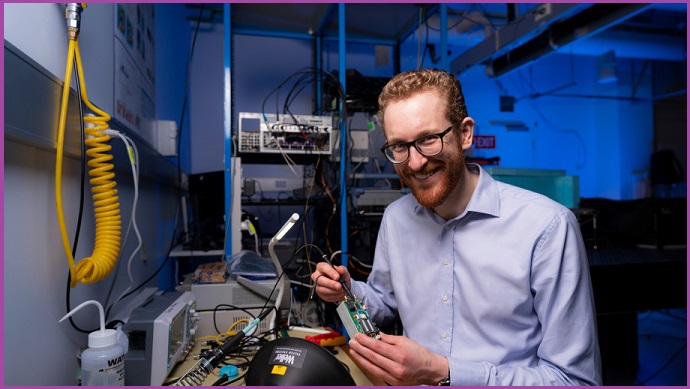A world-first room temperature quantum computer from Canberra startup Quantum Brilliance will be installed at the Pawsey Supercomputing Centre in Western Australia later this year.
Most existing quantum computers from the likes of IBM and Google require extreme cold to operate but the technology behind Quantum Brilliance’s computer will let it operate at room temperature for easier integration with existing systems.
CEO of Quantum Brilliance, Dr Andrew Horsley said the technology is set to transform industries locally and abroad.
"Because of our unique diamond-based technology, customers can run our quantum computers themselves, and we provide them a full set of tools to explore how quantum can help create new capabilities,” he said.
Speaking at a recent webinar, Dr Marcus Doherty, co-founder and Chief Scientific Officer of Quantum Brilliance, said the quantum systems leans on a defect in diamonds known as the “nitrogen-vacancy centre”.
“By using the very particular properties of those defects, as well as the extreme properties of diamond, our quantum computers can operate at room temperature,” Dr Doherty said.
“They also have relatively simple control systems, which means that we can ultimately shrink quantum computers down into something the size of a graphics accelerator card.”
Quantum Brilliance has what Dr Doherty called “a simple quantum development kit” – a box with a existing qubits that are set to be plugged into a system at the Pawsey Supercomputing Centre by the end of the year.
The development kit will augment a quantum computer emulator running on one of Pawsey’s supercomputers that acts as an “accurate representation” of current and future Quantum Brilliance devices.
The joint effort between Pawsey and Quantum Brilliance will see a select group of quantum computing researchers develop truly next-generation applications.
Ugo Varetto, Pawsey’s Chief Technology Officer, said it was important for the organisation to remain on the cutting edge of computing.
“We have experienced an increase in demand for supercomputing applications from researchers working on new quantum algorithms and simulators,” he said.
“Today you can access quantum environments on all the major platforms. Then of course there is the accelerated growth of quantum industry in Australia.”
Starting Australia’s quantum industry
The CSIRO expects quantum technology to become a $4 billion industry and create 16,000 jobs by 2040.
Dr Doherty sees the collaboration between Pawsey and Quantum Brilliance as a way of helping the CSIRO’s predictions come true.
“Our big picture motivation here is to stimulate a vibrant quantum computing ecosystem, which really kick starts the generation of a sovereign quantum computing industry, and development of sovereign capability in this field,” he said.
Since the beginning of its Quantum Pioneers program in February, Pawsey has attracted researchers from around the world who are looking to make the most of direct access to a quantum system.
One of those is Quantum South, a Uruguayan startup looking to use quantum computing to optimise complex logistics problems for airlines and shipping companies.
Professor Rafael Sotelo, co-founder of Quantum South, said the company’s use-case is perfectly suited for testing the Quantum Brilliance computer.
“We need to integrate with legacy systems then prepare the data of each specific round of the algorithm to a particular instance of the problem and finally send it to the quantum computer to run the algorithm to obtain the best solution,” he said.
“Quantum South and Quantum Brilliance are working closer to demonstrate that quantum advantage can be achieved with few qubits in logistic optimisation applications.”
Over the next four years of development, Dr Doherty said the Quantum Brilliance system will continue to be shrunk down in size while increasing in power until becoming what he calls a “quantum accelerator” that can integrate with and augment existing computing systems.
“With that accelerator you will have 50-plus cubits, and it can deliver an advantage or benefit over a classical computer of the same size weight and power,” he said.
“This is really the key point for making a quantum computer useful to people in industry and more broadly.
“This different take on what a quantum computer is supports different applications in particular edge computing applications and massively parallel applications in supercomputing.”










